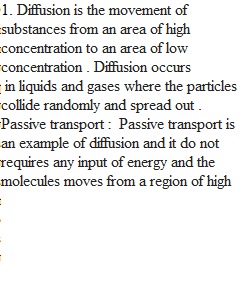


Q 1. 1. Define the terms diffusion , passive transport , active transport and osmosis Describe the role of a concentration gradient . 2. 2. Biological membranes are said to be selectively permeable (or semi-permeable). What does this term mean, and how does this affect the way that molecules are able to move through cellular membranes? 3.3. Which type of molecule is more likely to quickly pass through a cellular membrane via simple diffusion , polar or non- polar ? Why ?
View Related Questions